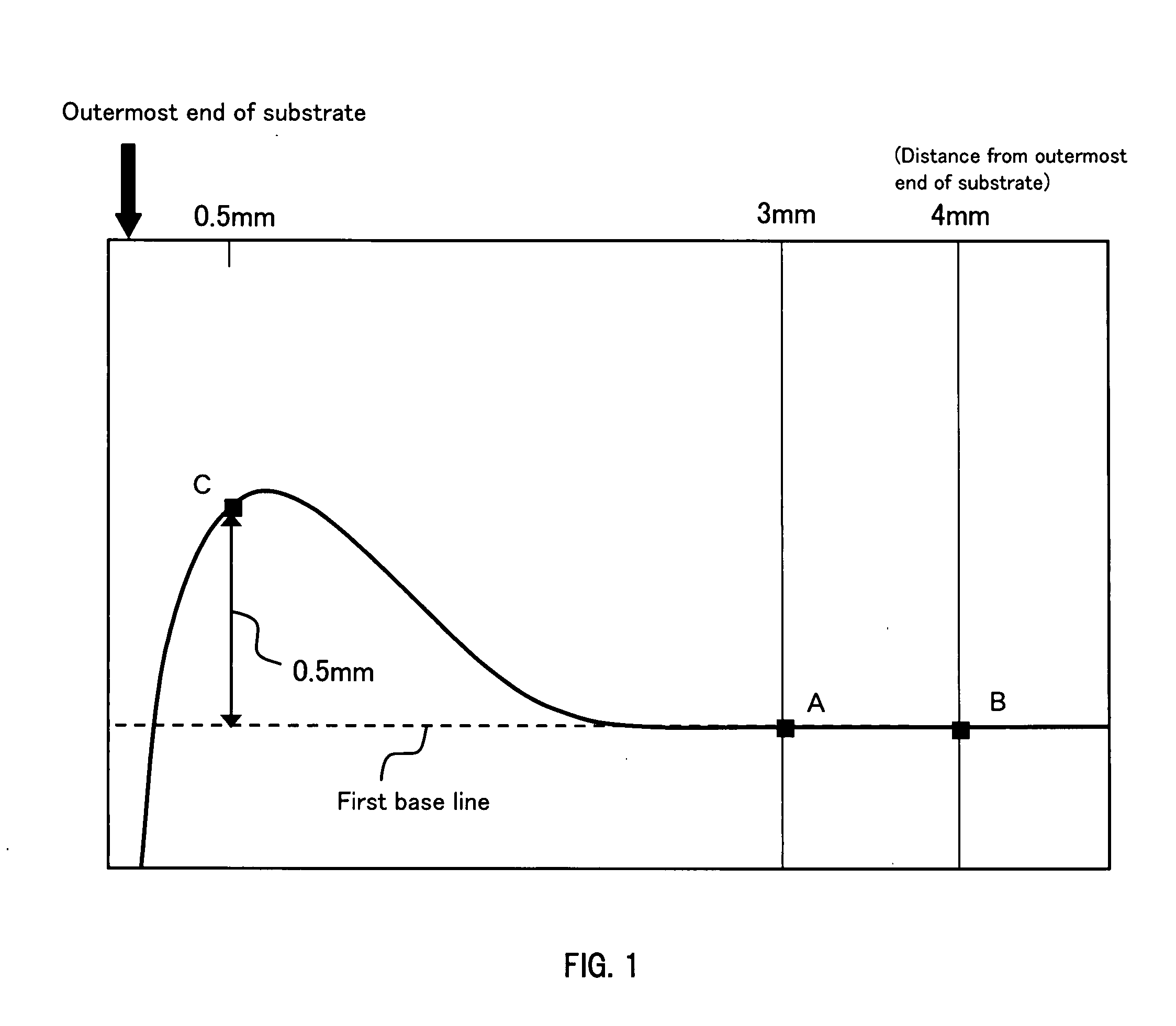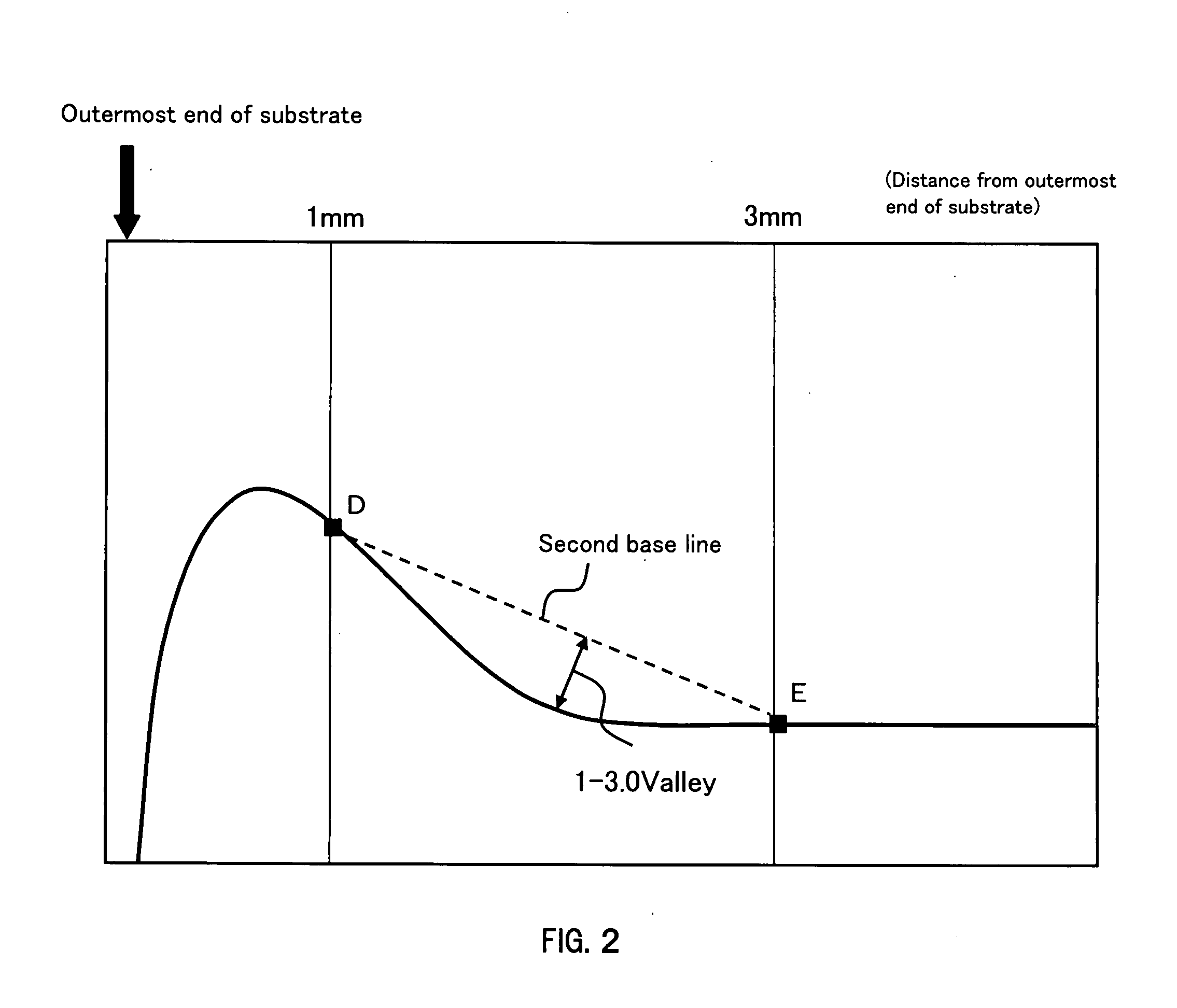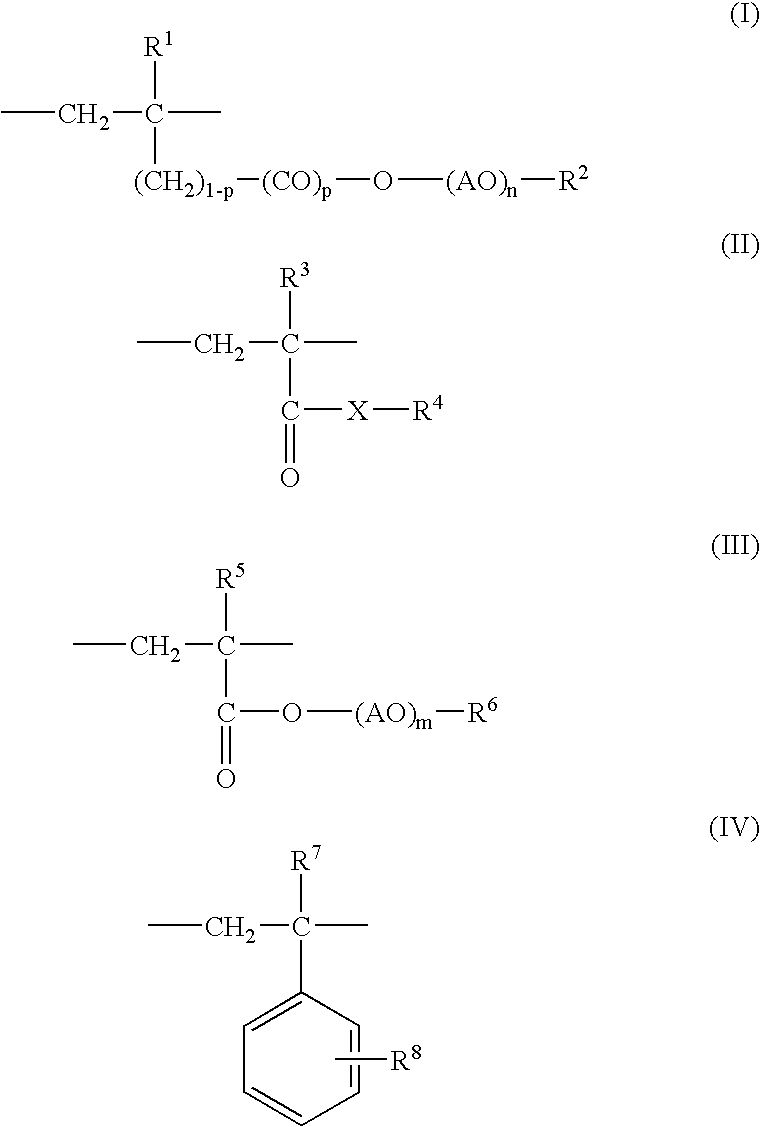Polishing composition
a technology of composition and polishing composition, applied in the field of polishing composition, can solve the problem that the effect of suppressing roll-off by the conventional polishing composition is not sufficient to meet such a requiremen
- Summary
- Abstract
- Description
- Claims
- Application Information
AI Technical Summary
Benefits of technology
Problems solved by technology
Method used
Image
Examples
examples
[0059]The following examples further describe and demonstrate embodiments of the present invention. The examples are given solely for the purpose of illustration and are not to be construed as limitations of the present invention.
examples 1 to 18
[0060]In Examples 1 to 18, polishing compositions were prepared by using copolymers that were synthesized from the monomers (materials) shown in Table 1. Then, substrates to be polished were polished with each of the polishing compositions prepared, and roll-off of the polished substrates was evaluated.
[0061]1. Synthesis of Copolymer
[0062]Hereinafter, the synthesis of a copolymer will be described by referring to Example 5. In Examples 1 to 4 and 6 to 18, copolymers were prepared in the same manner as Example 5 except that the monomers in Table 1 were used as materials.
[0063]A copolymer was synthesized by using methoxypolyethylene glycol (23 mol) methacrylate (PEGMA (EO23)) as a monomer for forming the constitutional unit of the formula (I), and stearyl methacrylate (SMA) as a monomer for forming the constitutional unit of the formula (II). Specifically, 90 g of (PEGMA (EO23)), 10 g of SMA, 100 g of methyl ethyl ketone that served as a polymerization solvent, and 1.0 g of a polymeri...
example 19
[0100]In Example 19, a polishing composition was prepared in the following manner by using the same copolymer as Example 6. Then, a substrate to be polished (silicon wafer) was polished with the polishing composition prepared, and roll-off of the polished substrate was evaluated.
[0101]1. Preparation of Polishing Composition
[0102]The polishing composition was prepared by mixing the copolymer, colloidal silica (average particle size: 30 nm), ammonia, hydroxyethylcellulose, and diethylene glycol with water. The content of each component was as follows: 0.002 wt % (20 ppm) for the copolymer (used in Example 6); 0.5 wt % (purity conversion of silica) for the colloidal silica; 0.02 wt % (200 ppm, purity conversion) for the ammonia; 0.0175 wt % (175 ppm, purity conversion) for the hydroxyethylcellulose; and 0.005 wt % (50 ppm, purity conversion) for the diethylene glycol.
[0103]2. Polishing Method
[0104]The substrate was polished with the polishing composition prepared for 20 minutes under t...
PUM
| Property | Measurement | Unit |
|---|---|---|
| particle size | aaaaa | aaaaa |
| particle size | aaaaa | aaaaa |
| particle size | aaaaa | aaaaa |
Abstract
Description
Claims
Application Information
 Login to View More
Login to View More - R&D
- Intellectual Property
- Life Sciences
- Materials
- Tech Scout
- Unparalleled Data Quality
- Higher Quality Content
- 60% Fewer Hallucinations
Browse by: Latest US Patents, China's latest patents, Technical Efficacy Thesaurus, Application Domain, Technology Topic, Popular Technical Reports.
© 2025 PatSnap. All rights reserved.Legal|Privacy policy|Modern Slavery Act Transparency Statement|Sitemap|About US| Contact US: help@patsnap.com



